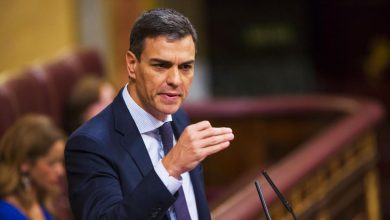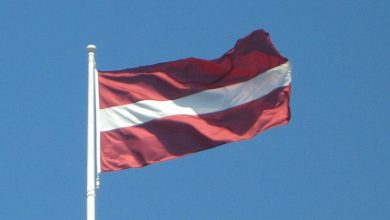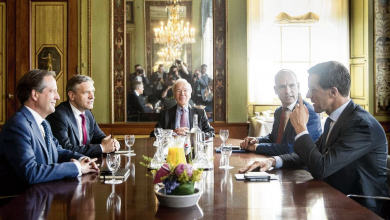Italian Elections: All You Need To Know

On 4th March, Italian voters will be electing the Parliament, the primary legislative organ of the country, for the next five years. Voters will elect the 630 deputies and 315 senators that make up the two chambers of the Parliament. After the vote, the coalition with the parliamentary majority will be tasked with forming a government.
The elections come after a troubled legislature: none of the three main party coalitions that competed in the 2013 general elections managed to achieve a majority, and political fragmentation has only increased since then.
With Italy being the third largest economy in the Eurozone, the elections come at a critical time. A victory from Eurosceptic parties, or the more likely scenario of a hung Parliament, might well compromise prospects of European reforms, currently being spearheaded by France and Germany.
Electoral System

Voters will elect members of Parliament through a mixed system that includes proportional and majoritarian elements. Every Italian citizen over 18 years of age has the right to vote for the lower house of Parliament, known as the Chamber of Deputies.
The Chamber is composed of 630 deputies. Of these, 232 will be elected in single-member constituencies, through a first-past-the-post system. A further 386 deputies will be selected in multi-member constituencies, through a proportional system. Finally, the remaining twelve seats are reserved for abroad and overseas constituencies.
Only citizens over the age of 25 are eligible to vote for senators. The Senate, which constitutes Italy’s upper chamber, is composed of 315 electable senators, and a variable number of senators for life – Italian citizens who have served or honored the country with distinction, appointed by the President of the Republic, as well as former Presidents themselves.
Senators are also elected through a mixed system: 116 will be elected in single-member, FPTP constituencies. A further 193 will be elected in multi-member constituencies, proportionally. Six senators are reserved for abroad and overseas constituencies.
Panachage, which is the practice of voting for different candidates or parties in the two systems, is not allowed. The voter cannot simultaneously select a candidate in the FPTP constituency and a proportional list which is not linked to them.
The two chambers are equal in powers and responsibilities. The threshold to enter the Italian Parliament will be 3% for single parties, 10% for coalitions.
Main Candidates
A plethora of parties will compete for Parliament seats, but the elections remain fundamentally a three-horse race between Silvio Berlusconi’s center-right coalition, the center-left Democratic Party, and the Five Stars Movement.
The center-right coalition is led by Silvio Berlusconi and his party Forza Italia, although Berlusconi himself cannot hold public office after a tax fraud indictment. The coalition includes the centrist Christian Democratic Union, and two populist, nationalist parties: Matteo Salvini’s Northern League (recently rebranded as just League) and Giorgia Meloni’s Brothers of Italy.

The center-left coalition is led by the incumbent Democratic Party. The coalition also includes a liberal, pro-European party called More Europe. Two further junior partners bolster the ranks: green-left party Together and centrist party Popular Civic List.

The Five Stars Movement is a party run by a private Italian marketing firm. Their top candidate is Luigi di Maio, although unelected comedian Beppe Grillo maintains ownership and contractual control of the movement. The party seeks support from both left wing and right wing voters, and does not join in coalitions with other parties ahead of general elections.
The electoral campaign has been marred by increasing tension and violence as fringe parties on the far left and the far right took to the streets in a string of protests and counter-protests. Politically motivated attacks and stabbings have followed in the wake of the Macerata incident, a drive-by shooting by Northern League member and former candidate Luca Traini, who gravely wounded six African migrants.
Main Issues
Italy is experiencing steady if sluggish economic growth, and the campaign has seen a decline in anti-European rhetoric. With that in mind, the European Union remains one of the critical points of the campaign, together with fiscal policies and immigration.
Economy
Italy’s modest economic growth is hampered by real and perceived economic inequality, as well as unemployment, which remains high by EU standards. More pressingly, public debt remains high, at over 130% of GDP. In this context, several parties have campaigned on contradicting economic platforms, promising handouts, decreased taxation and further government spending, while also promising to cut back on deficit – obviously incompatible propositions, whose discrepancies are clearly illustrated by the graph below.

The center-right coalition’s response to the sluggish Italian economy and high deficit exemplifies this ambiguity: on the one hand, Berlusconi’s coalition proposes a 15% flat tax with further tax credits for businesses. On the other, it pledges higher State expenditure on pensions and handouts.
The Democratic Party has pledged to introduce a 10 € minimum wage, along with other fiscal measures that would see a climb in State expenditure, including subsidies for Italian farmers. More Europe’s proposals differ from that of its main coalition partner, being more liberal oriented and prescribing a decrease in direct taxation, coupled with an increase in indirect taxation.
On fiscal policies, the Five Stars plan to introduce a universal basic income of 780 € for individuals, with higher sums for families, among other expenses. They also want to reduce the deficit, however – by a whopping 40% within ten years. As always, they are transformists – Luigi di Maio recently pledged to uphold the Fiscal Compact, while the party programme explicitly calls for ignoring it.
Migration
As a result of the Libyan civil war, over 600,000 migrants have landed on Italy’s shores in the past four years, and  the question of integration and the response to the crisis remains acute in the minds of Italian voters.
the question of integration and the response to the crisis remains acute in the minds of Italian voters.
The center-right coalition is outspokenly in favor of curbing migration and deporting illegal immigrants. Berlusconi has made a point of this after the Macerata shooting, accusing immigrants of being a “ticking bomb” and pledging to deport 600,000 illegals which he alleges reside in the country. The coalition supports a European Marshall Plan for Africa to stem the flow of incoming migrants.
The Democratic Party, along with its coalition, also suggests bilateral deals and European initiatives to reduce the flow of people heading north. The center-left also supports cutting EU funds to countries, like Poland and Hungary, who refused to share the burden with other European countries during the high peak of the humanitarian crisis in the Mediterranean. The Democratic Party also supports a citizenship law reform, proposing ius soli as a replacement for ius sanguinis.
The Five Stars are hardliners against illegal migration, although they have touched on the issue with less frequency compared to Lega Nord and other right-wing parties.
The European Union
 Silvio Berlusconi’s coalition has ambiguous attitudes to European integration. Brothers of Italy and the Northern League are vehemently Eurosceptic, although their rhetoric has somewhat softened during the campaign.
Silvio Berlusconi’s coalition has ambiguous attitudes to European integration. Brothers of Italy and the Northern League are vehemently Eurosceptic, although their rhetoric has somewhat softened during the campaign.
On the contrary, the center-left coalition is outspokenly pro-European: More Europe in particular calls for outright European unity in a federal framework, whereas the Democratic Party remains pro-integration, with caveats on the Fiscal Compact. The Five Stars are also Eurosceptic, and a Eurozone membership referendum sits high atop their political agenda. Conducting said referendum would require amending the Italian Constitution.
It’s worth noting that Italians have historically been among the most pro-European nationalities on the continent. This has recently changed: according to a study by the Jacques Delors institute, less than 40% of Italians have a favorable view of the EU, down from 80% in the 1990s.
One caveat however is that Italians are peculiar in their dissatisfaction: most Italians favor the continuation and deepening of further, common European policies. In several areas, including migration, Italian voters would like the EU to do more, not less, and regret that initiatives are not more efficient.
Polls
Current polls see the center-right coalition in the lead with a 38% share of voting preferences, some ten points ahead of the center-left coalition. The Five Stars are Italy’s single largest party, polling consistently between 26 and 28%.





